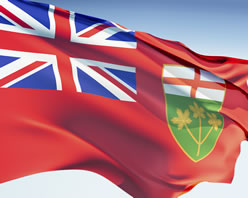Ontario Residential Treatment Options Explained
Posted by CDR Help Desk on Jun 5, 2014 in Addiction Treatment Help | 0 comments
This is a brief explanation of the differences between the three treatment types. There will be a mix of government, private and charitable options.
Private
You can choose any facility you wish. The average cost of private treatment is roughly $5000 – $15000 for a 30-day program. The benefit of paying privately is that clients are typically admitted right away. Some facilities are equipped to do detox on site, while others will require you to detox/withdraw prior to admittance.
Benefits: more 1-on-1 counselling, the ratio to staff to client is higher (i.e. unique clients needs are given more attention), and there is usually an aftercare and family program.
Charitable
You can also choose to get treatment from a charitable place anywhere is Canada. Typically charitable options are programs run by organizations like Salvation Army, United Way, and church groups. These groups do fundraising to help offset the costs of treatment. Typically clients have to be anywhere from 5 to 10 days sober. These programs usually cost under $5000/30 days of treatment (anywhere from $400 – $1240). There are often wait lists for these program, which can vary from 1 week to 1 year to get admitted.
Benefits: Cheaper cost for long-term programs (30-180days and sometimes 1 year).
Government
Most government treatment programs are free. Generally, you can only go to government treatment in the province you have valid health care for. Although it is covered (not including prescriptions), the wait lists are long and there is a certain procedure you must do for getting into treatment.
First, a person must have an assessment completed (usually by a drug and alcohol counselor at the local Mental Health and Addictions office). Once the assessment has been done, the counsellor can start to refer that person into provincially-funded or -sponsored treatment programs. At this point, he or she would wait until their intake date comes up. In the meantime, he or she can go to detox, attend local AA/NA meetings, and/or receive outpatient counselling (more intensive than meetings, less than rehab).
Government treatment programs are typically 18-30 days, do not usually have weekly 1-on-1 counselling, and do not have aftercare or family programs. Because so many people are trying to access treatment services, government programs need to move people through treatment quickly so everyone can receive some basic tools for a sober and clean life.
When researching treatment options, here is a set of questions we recommend everyone ask. These questions will you figure out which treatment center and its programs are going to be the right fit.
PROGRAM TYPES EXPLAINED
Here are links and/or descriptions to different treatment program modalities.
- 12-step programming
- Holistic
Treats the person as a whole using 12-step fundamentals as well as current evidence therapies, such as CBT (cognitive behavioural therapy), REBT (rational emotive behaviour therapy), Mindfulness, Narrative therapy, etc. - Evidence-based
Uses evidence-based therapies only, such as CBT, BPS+S (biopsychosocial + spiritual), EMDR, REBT, and/or any therapies that have been proven to have success in treating addiction through various research studies. - Christian/Spiritual
Faith-based programs that help clients find salvation in the Lord. They also, sometimes, use 12-steps or their own form of programming.
GOVERNMENT TREATMENT
We recommended all Ontario residents looking for addiction treatment keep the Ontario Drug and Alcohol helpline number handy (1-800-565-8603). This is a 24-hour hotline for Ontario Health Insurance. This is how residents can go about getting government treatment for themselves or loved ones. We recommend, if you do call, asking for the following four pieces of information:
- Initial assessment facilities
David cannot get government treatment without being referred. In order to get a referral to a public program he must be assessed - Detox facilities
Depending on how severe David’s alcoholism is, a medical detox may be needed prior to treatment. - Outpatient Treatment
Typically 6-12 weeks long, once a week, for 1-6 hours at a time. It is more than meetings less than rehab. This is sometimes a good interim solution when waiting to get into a rehabilitation program. - Residential treatment options (which programs are funded and/or sponsored by your provincial government)
Bypassing Regional Restrictions
Ontario Drug and Alcohol helpline (http://www.drugandalcoholhelpline.ca/)
- Go to the directory button (blue on the left side of page)
- For location, either leave it for all of Ontario OR type in a municipality (as a start location)
- Service > type of service > select “support within housing”, “residential supportive”, or “residential”
- Profile: put in profile details, if needed (this step is not needed for general options)
- Hit “SEARCH”



